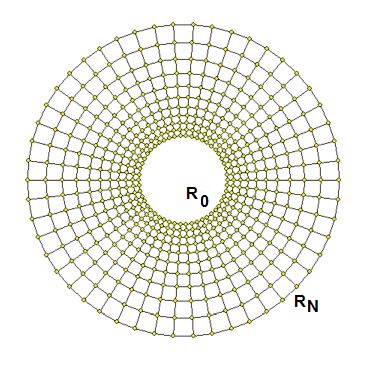

What we furthermore need is the following Lemma.
$$
w_a(x-A)^2+w_b(x-B)^2=(w_a+w_b)\left(x-\frac{w_aA+w_bB}{w_a+w_b}\right)^2+\frac{w_aw_b}{w_a+w_b}(A-B)^2
$$
Where $x,A,B$ and $w_a,w_b > 0$ are real numbers.
Proof.
$$
w_a(x-A)^2+w_b(x-B)^2=\\ w_a(x^2-2Ax+A^2)+w_b(x^2-2Bx+B^2)=\\
(w_a+w_b)x^2-2(w_aA+w_bB)x+(w_aA^2+w_bB^2)=\\
(w_a+w_b)\left[x^2-2\frac{w_aA+w_bB}{w_a+w_b}+\left(\frac{w_aA+w_bB}{w_a+w_b}\right)^2\right]
-(w_a+w_b)\left(\frac{w_aA+w_bB}{w_a+w_b}\right)^2+(w_aA^2+w_bB^2)=\\
(w_a+w_b)\left(x-\frac{w_aA+w_bB}{w_a+w_b}\right)^2
+\frac{-(w_aA+w_bB)^2+(w_a+w_b)(w_aA^2+w_bB^2)}{w_a+w_b}=\\
(w_a+w_b)\left(x-\frac{w_aA+w_bB}{w_a+w_b}\right)^2
+\frac{-(w_a^2A^2+2w_aw_bAB+w_b^2B^2)+w_a^2A^2+w_b^2B^2+w_aw_bA^2+w_aw_bB^2}{w_a+w_b}=\\
(w_a+w_b)\left(x-\frac{w_aA+w_bB}{w_a+w_b}\right)^2
+\frac{w_aw_b(A^2-2AB+B^2)}{w_a+w_b}=\\
(w_a+w_b)\left(x-\frac{w_aA+w_bB}{w_a+w_b}\right)^2+\frac{w_aw_b}{w_a+w_b}(A-B)^2
$$
Without Loss Of Generality (WLOG) we can put for the weighting factors: $w_1+w_2=1$ . Then we have:
$$
w_a(x-A)^2+w_b(x-B)^2=\left[x-(w_aA+w_bB)\right]^2+w_aw_b(A-B)^2
$$
In particular when $\,w_1=w_2=1/2$ :
$$
\frac{1}{2}\left[(x-A)^2+(x-B)^2\right]=\left(x-\frac{A+B}{2}\right)^2+\left(\frac{A-B}{2}\right)^2
$$
Application. We have found for the edges:
$$
R_i \times \left[\;2.\sin(\pi/M)\;,\;(c-1)\;,\;c.2.\sin(\pi/M)\;,\;(c-1)\;\right]
$$
What we want now is to determine the constant $c$ in such a way that the following approximate
equalities hold as good as possible:
$$
2.\sin(\pi/M) \approx c-1 \quad \mbox{and} \quad c.2.\sin(\pi/M) \approx c-1
$$
Meaning that the quadrilaterals are similar to squares as good as possible.
Formulated in a Least Squares sense, this in turn means that:
$$
\frac{1}{2}\left[(x-A)^2+(x-B)^2\right] = \mbox{minimum}(c)
$$
with the substitutions $x = c-1$ , $A = 2.\sin(\pi/M)$ and $B = c.2.\sin(\pi/M)$ .
The minimum is obviously attained when $x = (A+B)/2$ or:
$$
c-1 = \sin(\pi/M)+c\sin(\pi/M) \quad \Longrightarrow \quad
c\left[1-\sin(\pi/M)\right]=1+\sin(\pi/M) \quad \Longrightarrow \\
\frac{1+\sin(\pi/M)}{1-\sin(\pi/M)} = c = \left(\frac{R_N}{R_0}\right)^{1/N}
\quad \Longrightarrow \quad \frac{R_N}{R_0} = \left(\frac{1+\sin(\pi/M)}{1-\sin(\pi/M)}\right)^N
$$
If the outer mesh radius is normed to one, ipse est $R_N=1$,
then we have for the inner mesh radius:
$$
R_0 = \left(\frac{1-\sin(\pi/M)}{1+\sin(\pi/M)}\right)^N
$$